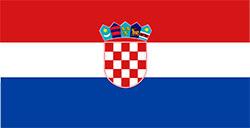THE 1910 Mexican Revolution it started mainly because of the peasants who claimed the search for indigenous origins, that is, the return of the “Mexican feeling”. The main objective of the revolution was the distribution of land among the peasants who made up a large part of the population. This need for land gave rise to the beginning of the revolution.
During the revolution, a revolutionary peasant leader stood out, Emiliano Zapata (1873-1919). A descendant of Indians and Spaniards, he became the main popular leader of the peasants and the most prominent political figure in Mexico. Its main claims were configured in the land reform and on the groundvalorization of indigenous culture, worn down by the dictatorships of Porfírio Díaz (1876 to 1880 and from 1884 to 1911) and Victoriano Huerta (1913 to 1914). Within the peasant ideal, the exploitation of mineral and vegetable resources by foreigners would be devastating for the Mexican popular classes.
Zapata created the Ayala plan, manifested by the Mexican agrarian reform, which was later adopted by various social movements as a symbol of the struggle for land in Latin America.
In 1919, Emiliano Zapata was assassinated by a Mexican Army officer. With Zapata's death, the peasant movement suffered an irreversible loss, leading to the victory of the land-owning elite and the establishment of liberalism in Mexico.
However, Zapata's charisma and the figure of a leader influenced, in 1994, the peasant people of the Chiapas state, one of the poorest states in Mexico, creating the Zapatista National Liberation Army (EZLN). Neozapatism originated from the National Liberation Forces (FLN).
The Zapatista National Liberation Army, commanded by the clandestine indigenous revolutionary committee, has as its main leader the deputy commander Marcos. The main actions of neozapatismo are the opposition to naphtha (economic agreement between Mexico, the United States and Canada), which would represent the continuation of submission to capital external, and the demand for agrarian reform and greater rights for the indigenous people of Chiapas, descendants of the Mayans.
In 1997, the Zapatista Army marched to the capital of Mexico, demonstrating to the world the social problems experienced by the popular strata. The Mexican government violently invaded the state of Chiapas and started a conflict with the revolutionaries. During the conflict, 45 indigenous Zapatistas died, which made news around the world. Currently, the Zapatista Army is still trying to demonstrate to the world the plight of Mexican peasants.
By Leandro Carvalho
Master in History

